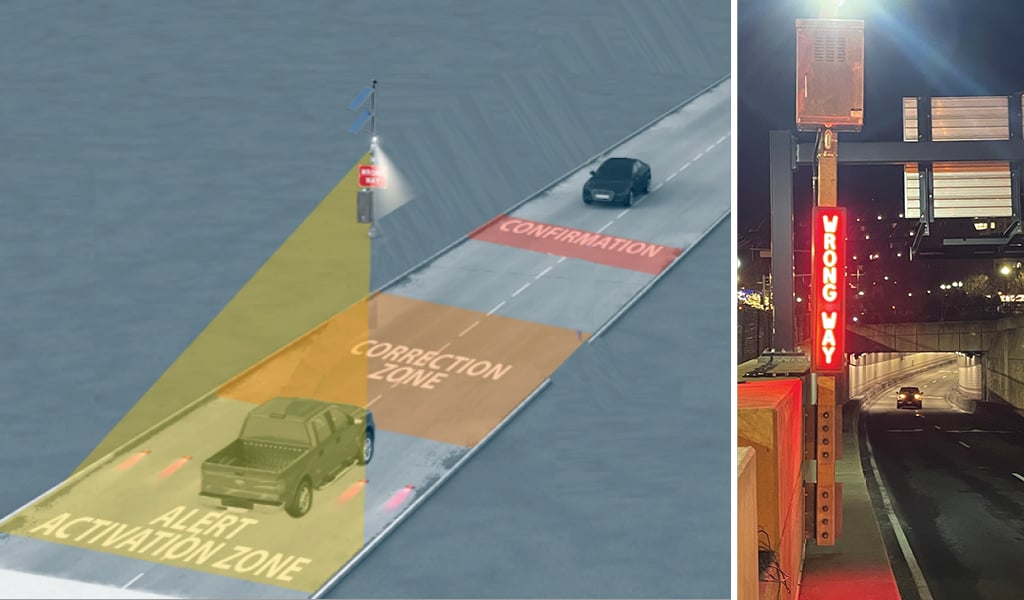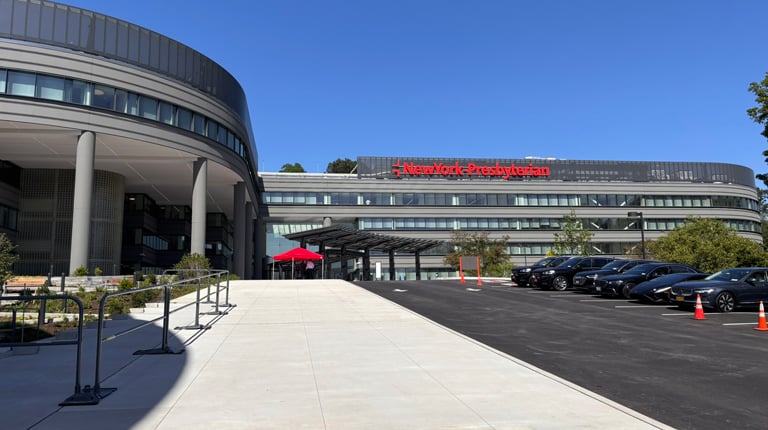Though they only account for a small percentage of collisions on America’s roadways, crashes caused by drivers mistakenly entering highway off-ramps keep escalating. Wrong-way driving (WWD) crashes caused approximately 500 fatalities annually between 2015 and 2018, an increase of 34 percent over the five previous years. To reverse this dangerous trend, VHB’s traffic engineers have been equipping transportation agencies with intelligent transportation system (ITS) countermeasures to help prevent WWD crashes.

“When a driver is disoriented, ITS technology can mean the difference between life and death,” said Pete Pavao, VHB’s Rhode Island Transportation Market Lead. “WWD detection systems make a measurable impact in protecting people. We’re committed to providing DOTs with this technology and other valuable tools for their critical push toward eliminating crashes on our roadways.”
Rhode Island’s Department of Transportation (RIDOT) was an early adopter of WWD detection technology, and they turned to VHB in 2013 for a more comprehensive WWD solution than the mandatory wrong-way signage and pavement markings. After working with state police to pinpoint high-risk locations, VHB worked with RIDOT to install WWD detection systems at select ramps, along with enhanced signing, striping, and geometric improvements, such as changing the angle of a ramp’s entrance.
The solar-powered systems use incoming radar to detect a vehicle approaching from the wrong direction. Flashing LED wrong-way alert signs activate to alert the driver and a camera records the incident. If outgoing radar confirms the driver has not corrected their course, the system’s web-based software uses cellular communication to alert RIDOT’s Transportation Management Center and state police via text and email. Right-way drivers on the interstate are also notified by overhead dynamic message signs (DMS).
RIDOT’s data tells a compelling story about the agency’s lifesaving WWD technology—the first deployment of its kind in New England. Over a seven-year span prior to its implementation, 91 WWD incidents caused 34 crashes and 13 fatalities. The 29 ramps with the detection system had only one crash and no fatalities in the seven years after it was installed (through November 2022).
After learning about RIDOT’s WWD prevention program’s success, the Massachusetts Department of Transportation (MassDOT) has taken similar steps to confront this roadway hazard. With VHB’s guidance, MassDOT implemented a WWD detection pilot program in 2020 at 16 highway off-ramps where state police logged the most WWD incidents.
Like RIDOT’s wrong-way signs, MassDOT’s solar-powered thermal detection equipment identifies a wrong-way vehicle and illuminators and flashing wrong-way LED signs warn the motorist. If the vehicle continues, the system’s cloud-based monitoring software notifies the Highway Operations Center and police. Of the 50 WWD incidents recorded by MassDOT at the ramps since the system was installed in November 2022, no accidents have occurred and 35 drivers self-corrected.
For years, the VHB Orlando office has been supporting Florida’s Department of Transportation (FDOT) in its Wrong-Way Driving Initiative to curb WWD collisions. VHB’s ITS engineers have designed more than 45 thermal camera WWD detection systems throughout the state that function similarly to those deployed in Rhode Island.
VHB’s ITS engineers continue to advance FDOT’s WWD prevention initiative, installing WWD detection systems at 44 exit ramps across three expressways through Florida’s Turnpike Enterprise design-build project. VHB’s Orlando-based team, led by Joe Perri, Director of Transportation Technology, has developed software for a WWD detection system manufacturer that allows integration with leading-edge light detection and ranging (LiDAR) technology. The software provides reporting functionality and allows users the ability to classify WWD events, monitor the operation of the system equipment, and test the system detection devices.
To learn more about how VHB can assist your agency or municipality with WWD detection and crash prevention and other transportation safety measures, email Pete.


